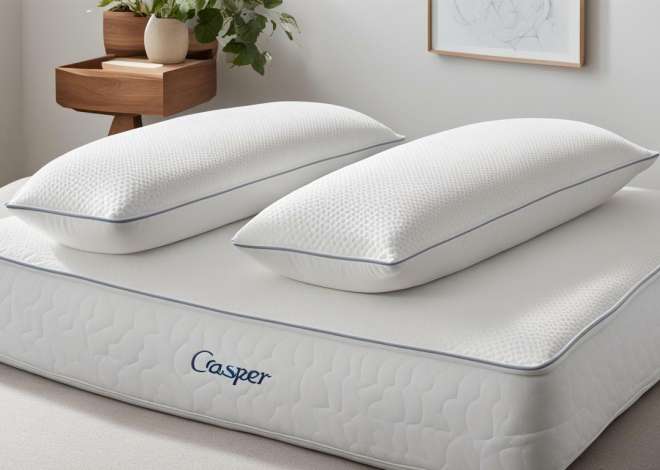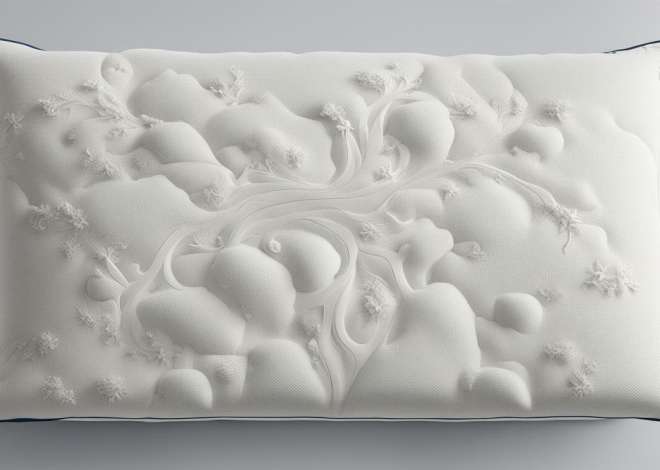
What is the best way to wash pillows in a washing machine?
Pillows are an essential component of our daily lives, as they provide comfort and support while we sleep. However, they can also harbor dirt, dust mites, and other debris over time, leading to unpleasant odors and allergies. Furthermore, pillows can accumulate bodily oils, sweat, and other fluids, making them a breeding ground for bacteria.So, how often should you wash your pillows, and what is the best way to do so in a washing machine? In this article, we will explore the types of pillows and their cleaning requirements, step-by-step procedures for washing and drying your pillows in a washing machine, and alternative methods for cleaning pillows if you don’t have a washing machine.
Why should you wash your pillows?
Before diving into the technical details, let’s talk about why you should wash your pillows. First, washing your pillows can remove dirt, dust mites, and other allergens that can cause respiratory problems or exacerbate existing ones. It can also help restore the shape and fluffiness of your pillows, ensuring that they remain comfortable and supportive. Secondly, washing your pillows can help get rid of any unpleasant odors or stains, making them more hygienic and visually appealing.
Additionally, washing your pillows can prolong their lifespan. Over time, sweat, oils, and dead skin cells can accumulate on your pillows, causing them to deteriorate faster. By washing them regularly, you can prevent this buildup and keep your pillows in good condition for longer. It’s recommended to wash your pillows every six months to a year, depending on how often you use them and your personal hygiene habits.
Understanding the types of pillows and their cleaning requirements
Not all pillows are created equal, and as such, the cleaning requirements can differ. Some pillows may require special care, based on their material or manufacturer’s instructions. In general, there are several types of pillows, including feather, down, synthetic, memory foam, and latex. Understanding the type of pillow you have can help you determine the best washing method.
Feather pillows are made from the outer feathers of ducks or geese and are known for their softness and fluffiness. However, they can be difficult to clean and may require professional cleaning. Down pillows, on the other hand, are made from the soft undercoating of ducks or geese and are also known for their softness and comfort. These pillows can be machine washed and dried, but it’s important to use a gentle cycle and low heat setting to avoid damaging the delicate down feathers.
Preparing your pillows for the washing machine
Before tossing your pillows into the washing machine, it’s essential to prep them appropriately. Start by removing any pillowcases or covers and inspecting the pillows for tears or damage. Repair any damage before washing, as this can prevent the filling from escaping or clumping. Next, check the pillow’s care label for washing instructions, as some pillows may require hand washing or dry cleaning.
It’s also important to note that not all types of pillows can be washed in a washing machine. Feather or down pillows, for example, may require special care or professional cleaning to avoid damage to the filling. Additionally, if your pillows are heavily soiled or have a strong odor, it may be necessary to pre-treat them with a stain remover or odor eliminator before washing. Taking these extra steps can help ensure that your pillows come out of the wash looking and smelling fresh.
Choosing the right washing machine settings for your pillows
Choosing the right washing machine settings is crucial in ensuring that your pillows come out clean and fluffy. Start by selecting a gentle or delicate cycle, as these are more suitable for pillows than regular cycles. Set the water temperature to warm or hot, depending on the type of pillow, and use a mild laundry detergent that is free of harsh chemicals or fragrances. Avoid using fabric softeners, as they can damage the pillows’ filling and decrease their fluffiness.
Using the right laundry detergent and fabric softener for your pillows
Choosing the right laundry detergent is essential in ensuring that your pillows come out clean and fresh-smelling without damaging the filling. Opt for a mild, low-sudsing detergent that is free of fragrances, chlorine bleach, and other harsh chemicals that can irritate the skin. Some laundry detergents may also contain fabric softeners or conditioners, which are not suitable for pillows. If you want to add extra freshness to your pillows, consider using a cup of white vinegar in the rinse cycle, as it can help remove any remaining odor or build-up.
Tips for avoiding clumping or lumps in your pillows after washing
Clumping or lumps in your pillows after washing can be frustrating, as they can affect their shape and comfort. To avoid this, add some clean tennis balls or dryer balls to the dryer when drying your pillows. These balls can help fluff the pillows and prevent the filling from clumping together. You can also try using a low heat setting or drying your pillows in sunlight, as high heat can shrink or damage the filling.
How to dry your pillows after washing
Drying your pillows correctly is crucial in restoring their shape and fluffiness. Start by squeezing out excess water from each pillow, then placing them in the dryer with the tennis balls or dryer balls. Set the dryer to a low heat setting, and check the pillows every 30 minutes to ensure that they are not overheating or drying out. If the pillows are still damp after the first cycle, add an extra cycle, as slow drying is better for the filling than high heat. Once the pillows are dry, fluff them gently with your hands to restore their shape.
How often should you wash your pillows?
The frequency with which you should wash your pillows depends on various factors, such as the type of pillow, its age, and its usage. In general, it’s advisable to wash your pillows at least twice a year, or more often if allergies or odors are an issue. If your pillow has a noticeable odor, stains, or is visibly dirty, it may be time for a wash.
Alternative methods for cleaning pillows if you don’t have a washing machine
If you don’t have a washing machine or prefer not to wash your pillows in one, there are alternative methods for cleaning them. One option is hand washing, which involves soaking the pillow in a tub or basin filled with warm water and mild detergent. Gently squeeze the pillow to remove any dirt or debris, then rinse with clean water until all the detergent is removed. Another option is using a vacuum cleaner with a brush attachment to remove dirt and dust from the pillow’s surface. You can also spot clean the pillow with a mixture of warm water and mild soap, using a clean cloth or sponge to rub gently.
In conclusion, washing your pillows in a washing machine is an effective way to clean and restore their fluffiness and hygiene. By following the above steps, you can ensure that your pillows come out clean, fresh, and free of clumping or lumps. Additionally, understanding the types of pillows and their cleaning requirements can help you select the appropriate washing method and avoid damaging the pillows’ filling or cover. Remember to check the washing machine settings, use mild laundry detergent and vinegar, and dry the pillows correctly to achieve the best results.


